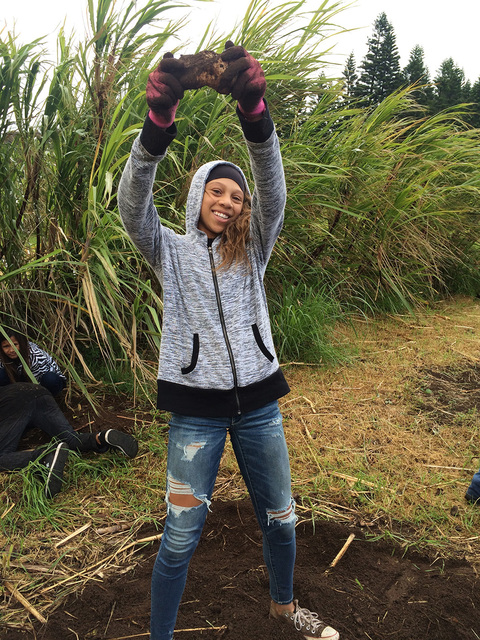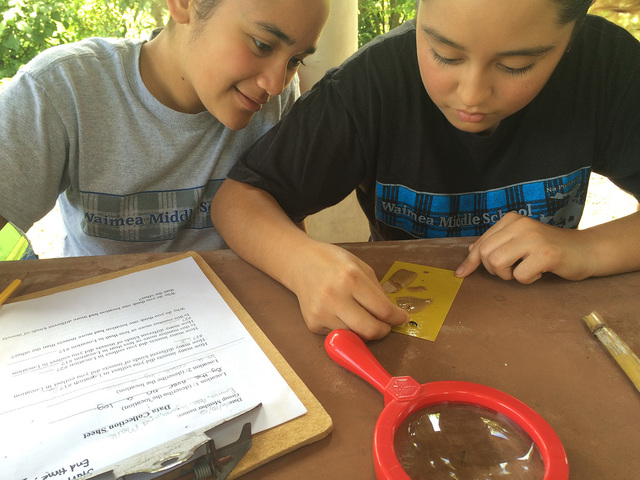WAIMEA — Students rated Waimea Middle School’s summer adventure as “fun,” doing everything from exploring a pre-contact Hawaiian agricultural field system below Puu Kehena in North Kohala and harvesting u ala (sweet potatoes) as native Hawaiians did centuries ago, to
WAIMEA — Students rated Waimea Middle School’s summer adventure as “fun,” doing everything from exploring a pre-contact Hawaiian agricultural field system below Puu Kehena in North Kohala and harvesting u ala (sweet potatoes) as native Hawaiians did centuries ago, to capturing and carefully scrutinizing the physical characteristics of bugs, researching their habits and habitat and learning to craft a biologically accurate drawing of the captured critter.
The program included an intensive three weeks indoors, outdoors and online learning about the environment, alternative energy, invasive species, food production, the ocean, forest and stream.
Other focuses ranged from learning how to sing in a chorus — which requires understanding rhythm, vocal control and performance protocols — to learning to make deliciously healthy snacks such as summer rolls with a rainbow of fresh vegetables and marinated tofu.
Students also learned about why cranking a handle would cause a magnet to generate electricity that could be converted into light, and how a solar oven grabs sunlight and converts it into heat, best illustrated making a graham cracker topped with a bit of chocolate and marshmallow into s’mores.
WMS Summer Adventure was a transformation of learning that incorporated STREAM education — science, technology, reading, aina and arts, and music. Seventy-five students participated and families and friends were invited to a culminating hoike to celebrate and share their learning on July 1.
The summer program involved nearly a dozen partners coming together to provide a high level education experience at an affordable price. Primary partners included the 21st Century Community Learning Center’s STEM-focused educational grant with Friends of the Future, Neilan Foundation, Kamehameha Schools, USDA “Summer Feed” food services, FoodCorps and the Big Island Invasive Species Committee. In addition, the eight-member teacher team and student interns worked closely with Ulu Laau — Waimea Outdoor Circle’s Nature Park, Kamehameha School’s Ulu Mau Puanui, Parker Ranch, Hawaii institute of the Pacific Agriculture, Friends of Kalopa State Park and NELHA.
Leading WMS Summer Adventure was Tina Benson, who also taught a class on alternative energy. Working with her were teachers Ryan Tan and Barbara Haight, Jennifer Fischer, Erica Owens, Linda LoBue and Geoffrey Mundon and Seri Niimi-Burch and Catherine Shafer.




